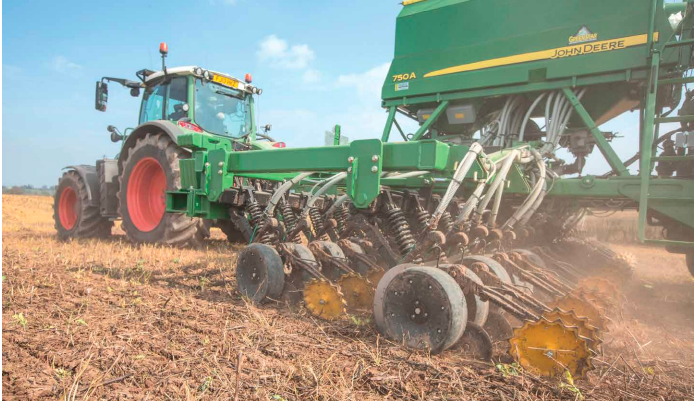By Richard Harding – Agronomist Extraordinaire
Simon Chiles has been advocating the benefits of the John Deere 750A drill for over 18 years. While carrying out his contracting business he has drilled almost every conceivable crop and as a contractor he has also had the benefit of drilling most soil types, from light chalky soils and sands through to silty and Gault clays. He has an engineering background and maintains that the performance of any machine is governed more by the operator than by any other factor. When asked by a farmer if he would show him how to set up his new drill the thought occurred to him that others might also benefit from such instruction.
He could not, however, have anticipated how great the demand would be. His initial courses were attended by large groups of people but he now prefers to keep the number in each session down to a maximum of ten. “I’ve learnt that people get far more benefit from smaller groups. They tend to open up more and the conversation seems to flow better. I also discovered that it pays to split the day into two halves. The first half deals with the drill and its operation; the second half is more about direct drilling as a system. The John Deere drill has lots of different adjustments that you can make to it. Each one can sometimes interact with another so it really pays to understand what the effects of the drill settings are on the soil and on drilling performance.
If the necessary time is spent to set the drill up properly it can achieve excellent results.” he says. Simon tries to arrange his drill courses over the winter months and around the country so that no one has to drive too far to one, although several people have flown in from further a field to attend. He has quite a demand for courses again this winter and is sorting out venues and possible dates at the moment. For anyone wishing to attend a course you can contact him via email at notillopenday@outlook.com or via Twitter on @SimonChiles

The top 5 operator drilling mistakes Simon encounters are:-
1 Trying to drill in unsuitable conditions, going two weeks earlier in the autumn and two weeks later in the spring are his rule of thumb.
2 Not being cautious enough about the effect decaying graminacious material (from either chopped straw or ground cover) can have in anaerobic conditions.
3 Not running the coulter pressure in constant pumping.
4 Not adjusting the coulter pressure correctly for soil conditions. Often coulter pressure is run too high.
5 Not adjusting the fan speed to the seed size and application rate
